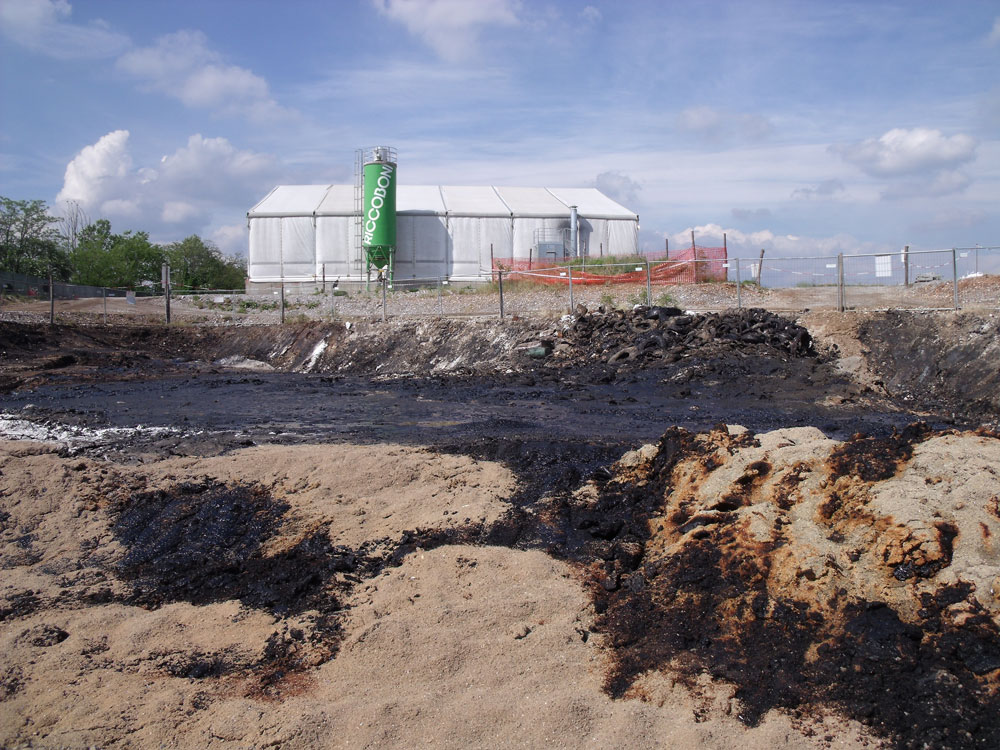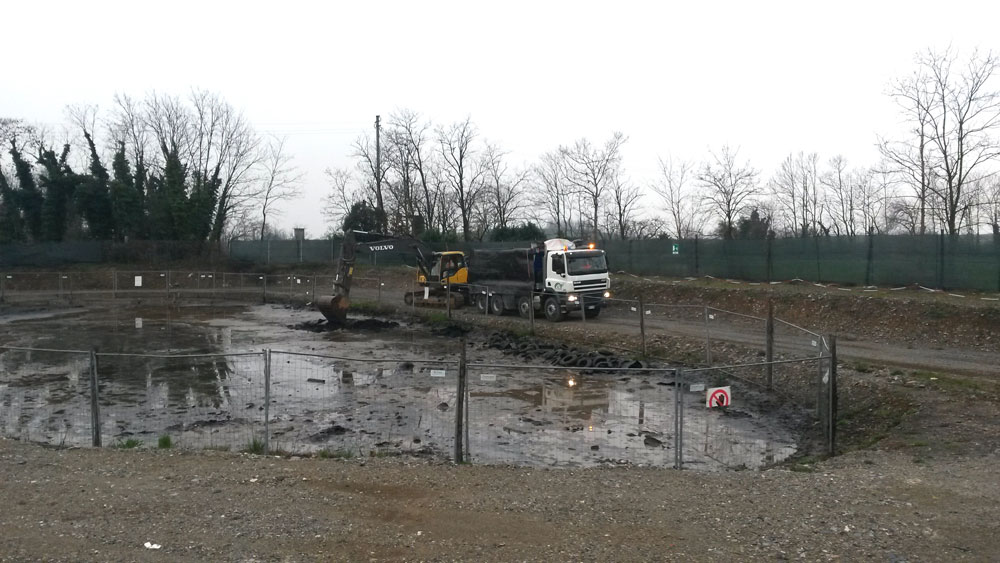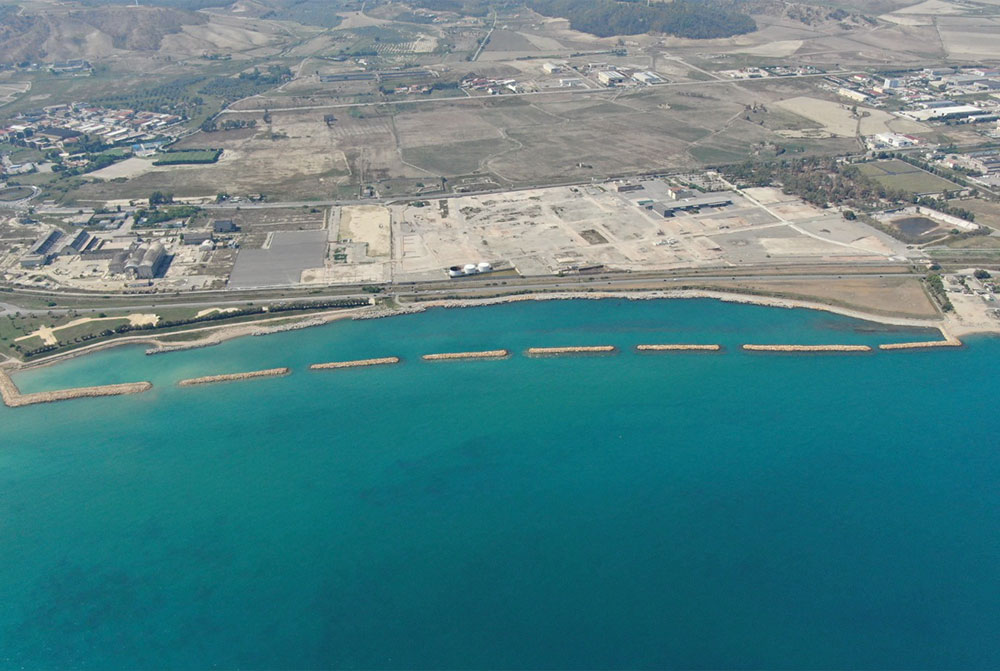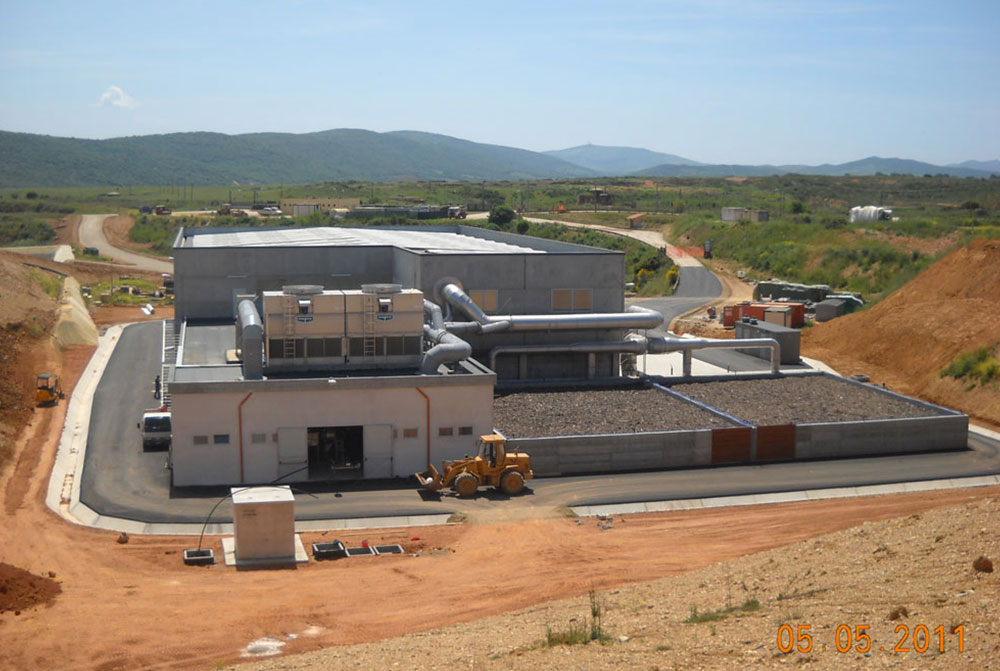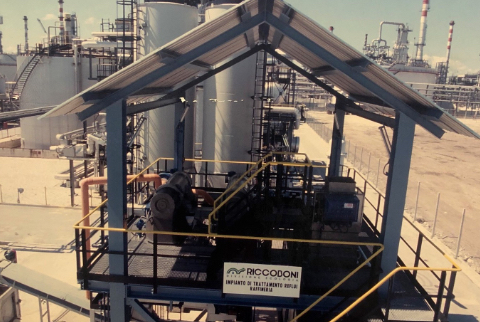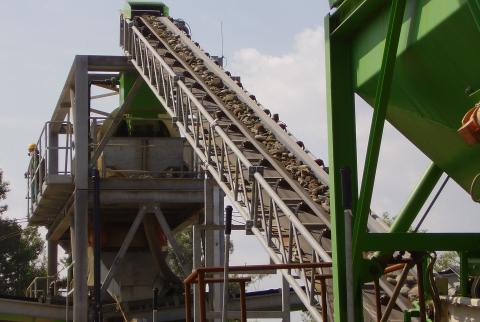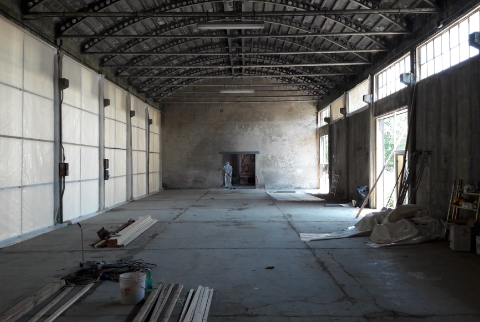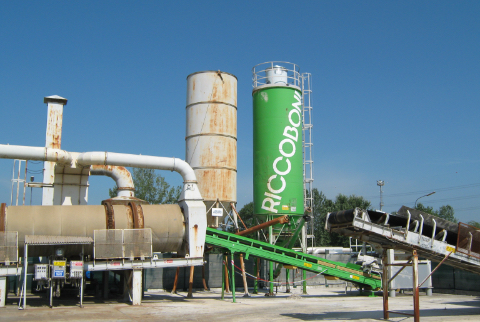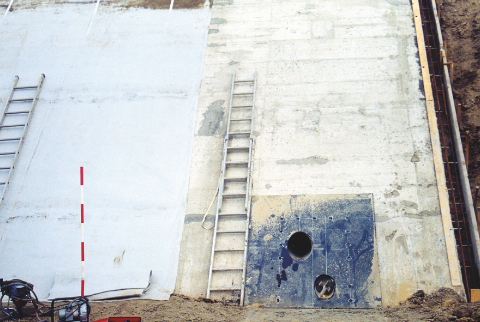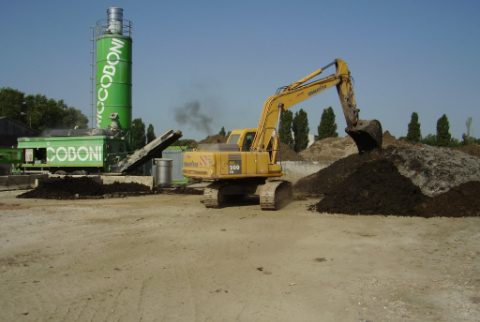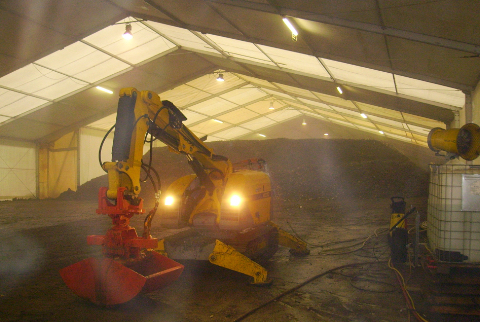The aim of the project was to remove the acid sludge and the surrounding saturated soil, located in a former quarry pit used until the mid-1970s for the illegal disposal of hazardous waste, treat it, dispose of it and, lastly, make the area of the pit safe. Over time, the high acidity of the sludge had, in fact, led to the contamination of the soil that had been used to partially fill the pit.
The operation was carried out by erecting a tent inside the depression, where tanks were constructed to treat the acid sludge using calcium oxide and sawdust. Once the degree of acidity had been sufficiently reduced, the waste was removed and transported to final disposal sites, which, in the case of the acid sludge, due to its excessively high hydrocarbon content, consisted of an incineration and energy recovery plant. Lastly, the area was restored and made safe, so as to prevent any deep percolation of rainwater; this involved installing a non-permeable barrier (clay and non-woven fabric sheeting) at the bottom of the pit, filling the depression with granular material and covering with a layer of sand, a polyethylene geomembrane and a top layer of arable soil. This completed the restoration, thereby putting an end to the legal proceedings.
Overall, the project involved the removal, stabilisation and subsequent disposal of 6,075 tons of acid sludge and 9,850 tons of contaminated soil. The principal contaminants found were total petroleum hydrocarbons, lead, and sludge with an extremely high degree of acidity.



